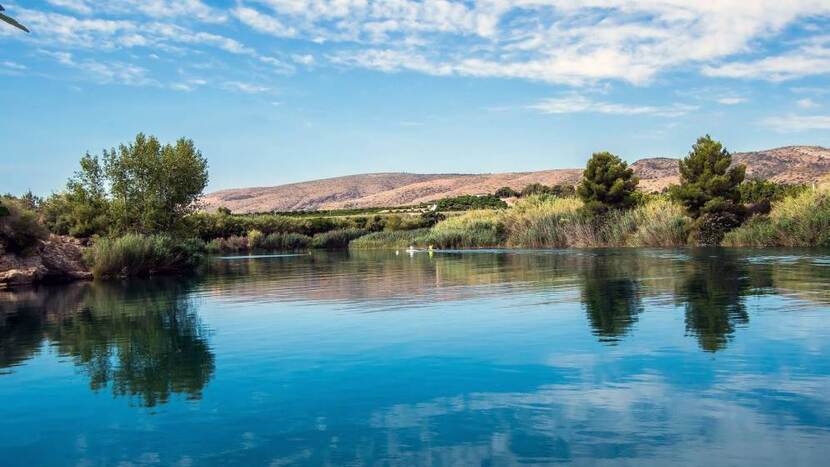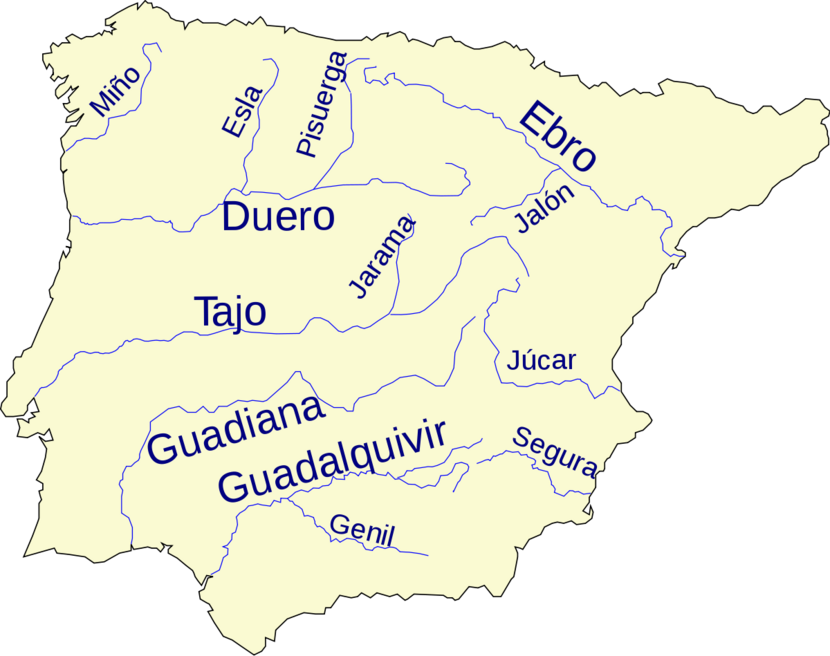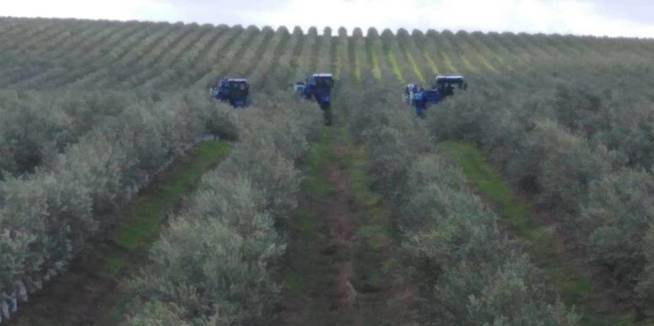Spain: Farmers are calling for irrigation to be included in national plans to rebuild the economy
Largest olive-growing cooperatives are betting on doing now the planned but not executed waterworks. Modern irrigated crops generate twice as much as employment as dry land. One-hectare's irrigated land can produce up to the equivalent of 40 hectares of rainfed land.

Spanish farmers, who until the corona outbreak were firmly protesting against the situation of food price in the country, are now asking to be heard in the so-called economic and social reconstruction pacts. In a virtual meeting with Philip VI, the three largest olive oil cooperatives has asked for his help to quenching their thirst for irrigation water.
“Infrastructures which have been planned for years or decades, and have not been built, are now more necessary and strategic than ever. National transport infrastructures are already in general highly developed. But reservoirs, pipelines and water transfers offer an excellent opportunity to generate employment in the short term, and development and wealth in the medium and long term”, Antonio Luque, President of Dcoop, says.
Luque, whose cooperative is the largest olive oil producer in the world and brings together 75,000 farmers, sums it graphically: “Water is the only barrier we have against desertification that is coming upon us, accelerated by climate change. We always say the same thing, with more water for irrigation, we would end up with up to half of the unemployment in Andalucía”.
The King will inform on the farmers’ demand to the Parliament’s Commission to include this topic. It will be then up to the political groups to decide on the debate agenda.
A debate that arises when the drafts of the 25 hydrological plans of the state-managed rivers are in the process of public consultation. These drafts for the 2021-2027 hydrological plans have raised, in particular in the case of Guadalquivir River (Fig. 1), a controversy with Fenacore, the association of irrigation farmers. It has strongly criticized the fact that the Guadalquivir plan does not include four dams in Córdoba, Jaén, Granada and Ciudad Real, which were included in the two previous multi-years plans (i.e. since 2009). In total, a 150 million euro investment that would be lost if the final document left it out.

Andrés del Campo, President of Fenacore, assures that hydraulic works such as dams and water transfers, “are now more necessary than ever to regulate the increasingly frequent torrential rains and the prolonged periods of drought, all worsen by the climate change”. “The dammed water is what allows Spanish agriculture to compete in Europe, and also what allows us to welcome, as we have been doing until the outbreak of the corona, more than 80 million tourists a year”.
The studies carried out by CEDEX forecast an average decrease in rainfall of 2-4% between 2010 and 2040. Regarding droughts, they indicate that the Gualdalquivir is the area that will suffer the most frequent water shortages. At a second level are the Guadiana, the Tagus and the Duero, as well as the Segura. On a third level would be the Ebro and those of northern Spain.
The example of Alqueva
Some conclusions on the impact of the creation of new irrigation in a wide area of the Iberian Peninsula, with modern irrigation systems and state-of-the-art crops, can be drawn from Portugal. The neighboring country has put into production, in the last two decades, up to 110,000 hectares (half of which are olive groves) with a provision of 9,000 cubic meters per hectare per year thanks to the Alqueva dam. Located in the depopulated Alentejo region, it was inaugurated in 2002 after an investment of 2,500 million euros. It is the largest dam in Western Europe and is located a few kilometers from the border entering from the province of Badajoz (Extremadura).
Income and population
A report evaluating the impact of Alqueva published in 2019 was co-authored by the Spanish consultant Juan Vilar. "Traditional, rainfed agriculture generates around 8 jobs per hectare per year. Modern irrigation, such as olive or almond trees in an intensive regime, doubles that. But I want to point out that what we have really proved to be key to maintaining the rural population is not so much employment, but the wealth that emanates from that employment. In other words, income. Modern agriculture does not need to subsidize its workers; it generates more and better-qualified jobs through the technification of crops, which are better paid. And it also improves the auxiliary industry that surrounds it," he summarizes.

Fernando Argüello, Director General of FIDEX, bets on two ways to expand the hydraulic infrastructures in Spain. "We have no doubt about the need for more dams to manage the floods caused by water slides and future droughts. But not all irrigation has to be supplied by dams, as these also fulfil other functions. In general, we believe that hydraulic works are strategic for three reasons: the demands of Europe on the quality of treated water, the demands for more and more water to be reused from these treatment plants and the aforementioned climate change and the need for works to regulate the fluctuations in flow rates'.
According to Argüello, “up to 95% of the treated water from urban consumption in Spain could be reused in the agriculture. And riverbeds are not dependent on the discharge of such water. In other words, we have the technology, the resources, we lack the political will. And this is in spite of the fact that the European Commission is indicating to us that the path of reuse is one of the paths of the future. We should anticipate it now and include these investments in the Spanish strategy to combat climate change", he concludes.
Purification or desalinization?
Del Campo qualifies the above mentioned point of view. "These waters that we could call regenerated are not good for all crops. Its cost is high and it is only applicable to those crops that generate high income and can afford it. Normally, 10% of regenerated water is used and the rest is normal water, so to speak". The President of the Spanish irrigation sector is clear: “just as desalination has not been the real alternative solution to transfers, neither can the use of regenerated water from treatment plants provide what reservoirs or transfers do”.
Source: elconfidencial.com